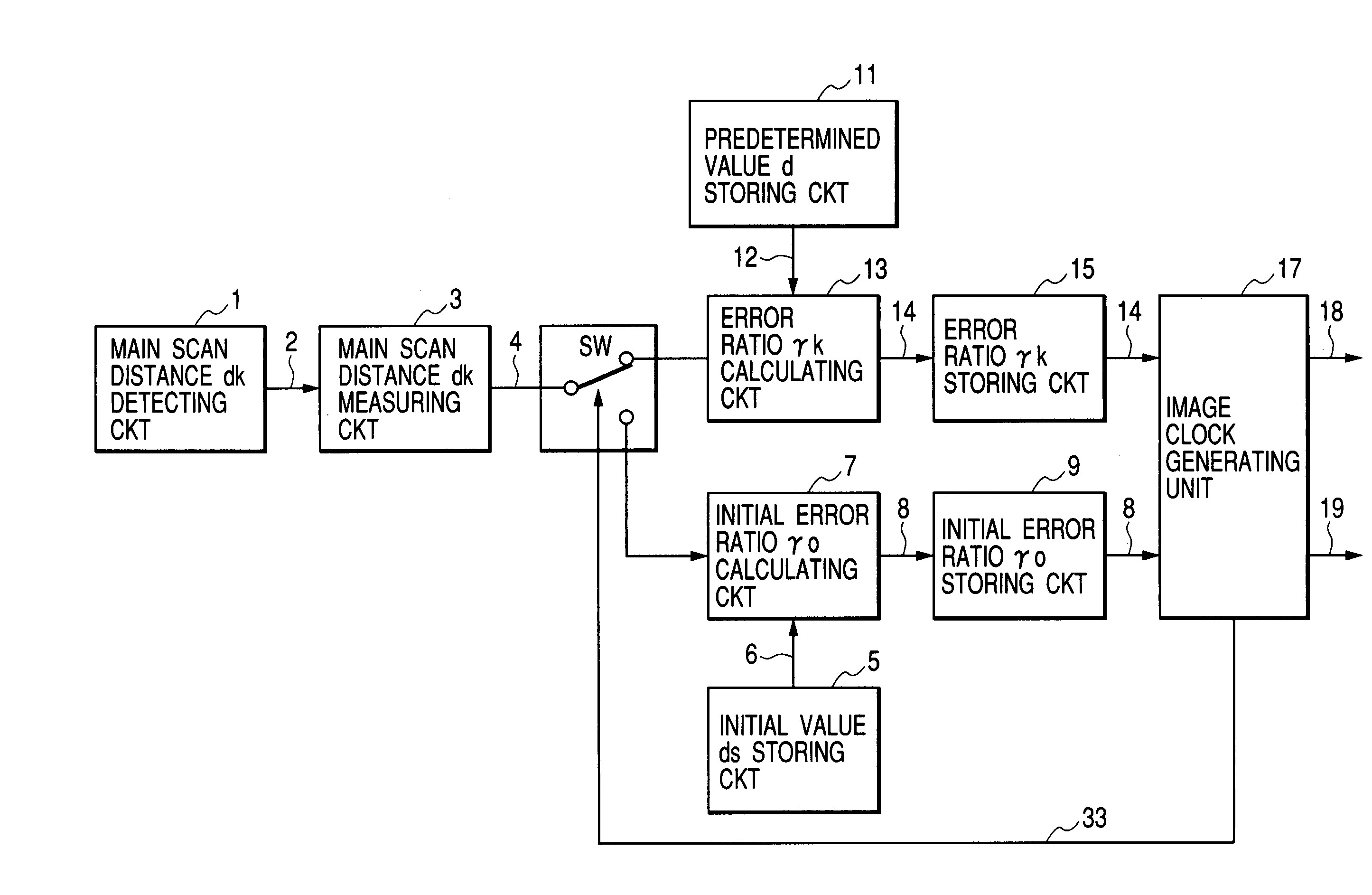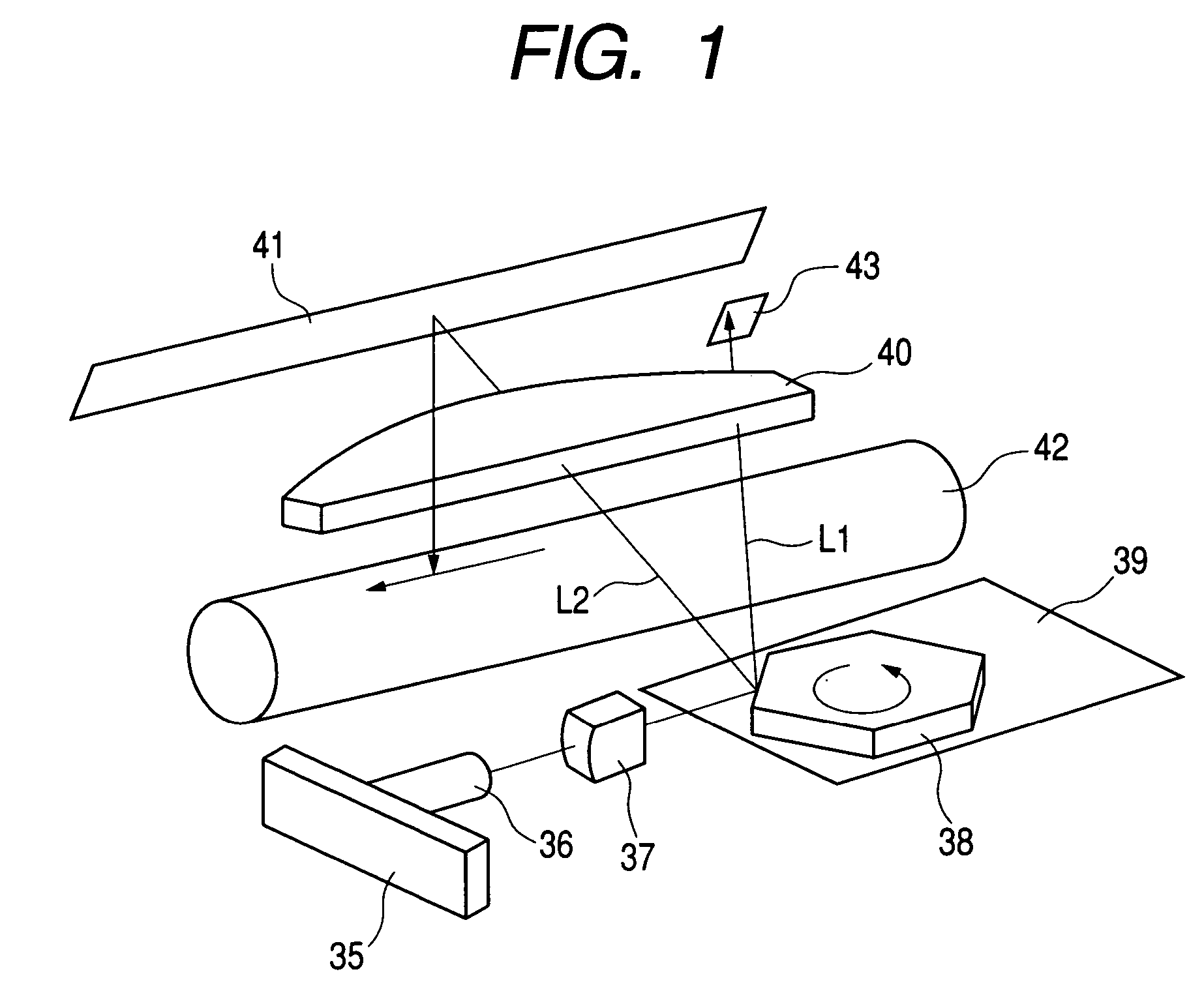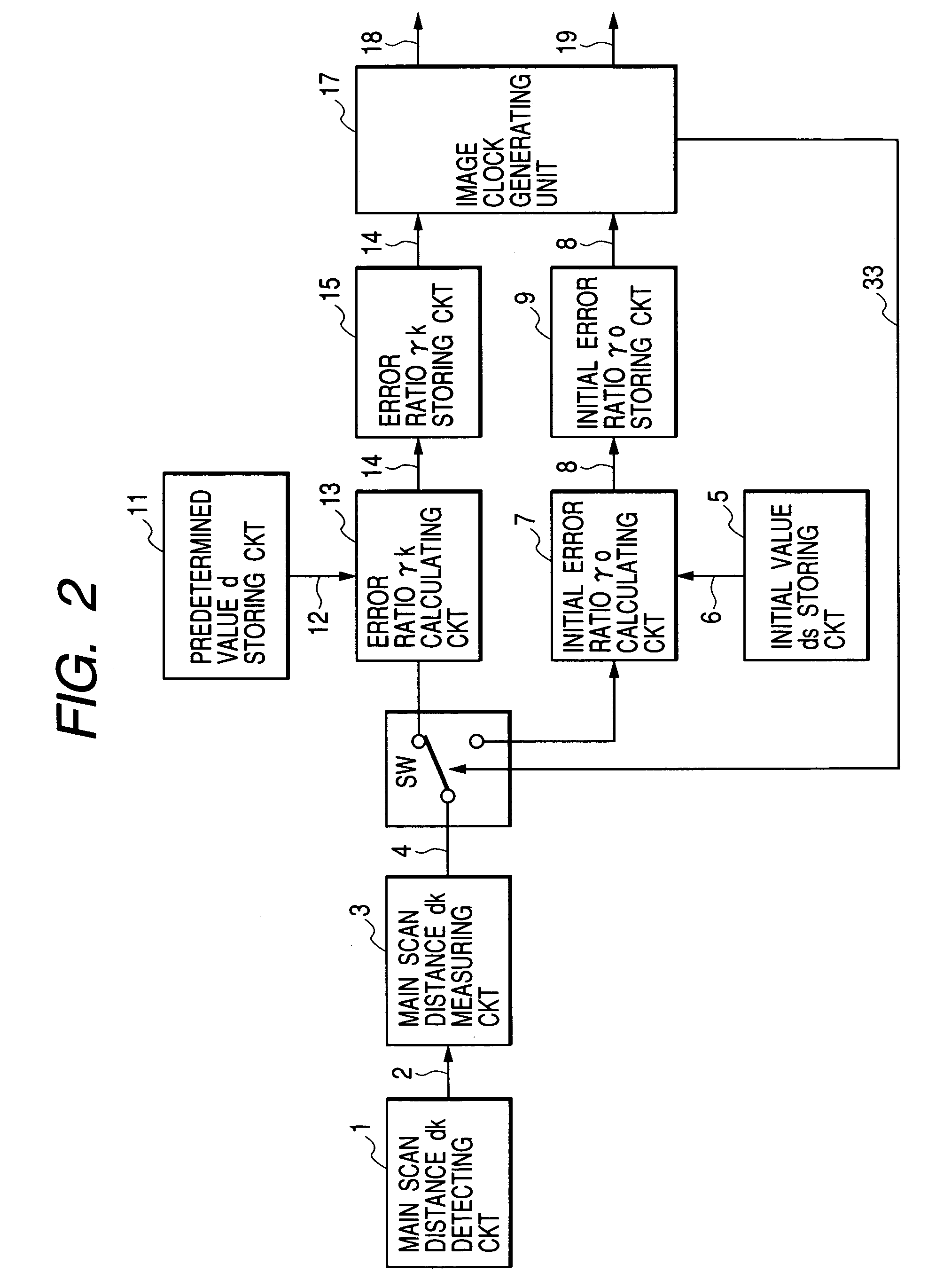Frequency modulation apparatus and frequency modulation method
a frequency modulation apparatus and frequency modulation technology, applied in the direction of instruments, furniture parts, electrographic processes, etc., can solve the problems of image distortion, misregistration and uneven coloring, and inability to accurately reproduce images, etc., to achieve high accuracy, superior printing quality, and printing ratio
- Summary
- Abstract
- Description
- Claims
- Application Information
AI Technical Summary
Benefits of technology
Problems solved by technology
Method used
Image
Examples
first embodiment
[0054]FIG. 1 is a specific diagram showing the configuration of the optical scanning unit of an image forming apparatus according to the present invention.
[0055]As is shown in FIG. 1, the optical scanning unit comprises: a laser unit 36 constituted by a semiconductor laser and a collimator lens (not shown), and a laser driving circuit 35 for driving the laser unit 36. As control signals for turning on or off a laser beam, a printing pattern signal and an image clock, which will be described later, are transmitted by a main scan magnification correcting circuit to the laser driving circuit 35.
[0056]In a non-image area, a laser beam L1 emitted by the laser unit 36 is passed through a cylindrical lens 37 and reaches a polygon mirror 38 that is rotated at a uniform angular velocity by a scanner motor unit 39. The laser beam L1 that has reached the polygon mirror 38 is deflected by the polygon mirror 38, and the deflected beam then enters an f-θ lens 40. Because of the condensing functio...
second embodiment
[0109]A second embodiment for performing re-correction will now be described while referring to FIG. 16. Actually, a block is formed of 100 or more segments. However, to simplify the explanation, one block is formed of twelve segments. The twelve segments are divided every four segments to form groups, and print patterns L1r, L2r and L3r are printed on paper and read by a scanner. Based on the obtained image data, the positions of the print patterns are detected while referring to the reference position (main scan start position), and shift distances h1, h2 and h3 from ideal values L1, L2 and L3 are obtained. Further, a shift distance (or shift amount) hn−n (n−1) for each block is calculated. In the example in FIG. 16, the following distances are obtained.
[0110]shift distance in block 1=h1
[0111]shift distance in block 2=h2−h1
[0112]shift distance in block 3=h3−h2
[0113]By using the shift distance (or shift amount) for each block and the image clock modulation method described above, m...
fourth embodiment
[0130]FIG. 18 is a specific diagram showing the arrangement of a multi-beam optical scan unit according to a In the following explanation, two beams are employed.
[0131]As is shown in FIG. 18, the optical scan unit includes a laser driving circuit 35 and a laser unit 36 driven by the laser driving circuit 35. The laser unit 36 is constituted by a semiconductor laser (not shown) that can emit two laser beams at the same time and a collimator lens (also not shown). The laser driving circuit 35 receives an image signal and an image clock that will be described later, and drives the semiconductor laser based on the image signal and the image clock.
[0132]In a non-image area, two laser beams L1 emitted by a laser unit 36 pass through a cylindrical lens 37 and reach a polygon mirror 38 that is rotated at a uniform angular velocity by a scanner motor unit 39. The laser beams that reach the polygon mirror 38 are deflected by the polygon mirror 38, and the deflected laser beams L1 then enter ...
PUM
 Login to View More
Login to View More Abstract
Description
Claims
Application Information
 Login to View More
Login to View More - R&D
- Intellectual Property
- Life Sciences
- Materials
- Tech Scout
- Unparalleled Data Quality
- Higher Quality Content
- 60% Fewer Hallucinations
Browse by: Latest US Patents, China's latest patents, Technical Efficacy Thesaurus, Application Domain, Technology Topic, Popular Technical Reports.
© 2025 PatSnap. All rights reserved.Legal|Privacy policy|Modern Slavery Act Transparency Statement|Sitemap|About US| Contact US: help@patsnap.com



